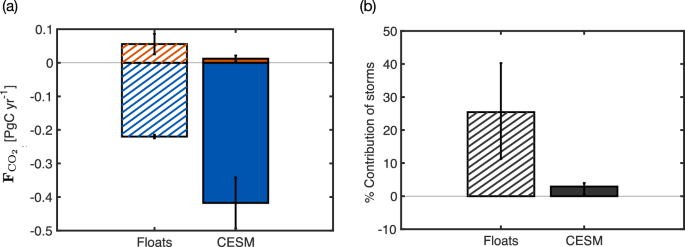Phys.org August 14, 2024
The strength and variability of the Southern Ocean carbon sink is a significant source of uncertainty in the global carbon budget. One barrier to reconciling observations and models is understanding how synoptic weather patterns modulate air-sea carbon exchange. An international team of researchers (USA – Monterey Bay Aquarium Research Institute, NCAR, Pacific Marine Environmental Laboratory, University of Arizona, Canada, South Africa) identified and tracked storms using atmospheric sea level pressure fields from reanalysis data to assess the role that storms play in driving air-sea CO2 exchange. They examined the main drivers of CO2 fluxes under storm forcing and quantified their contribution to Southern Ocean annual air-sea CO2 fluxes relying on a forced ocean-ice simulation from the Community Earth System Model, as well as CO2 fluxes estimated from Biogeochemical Argo floats. They found that extratropical storms in the Southern Hemisphere induced CO2 outgassing, driven by CO2 disequilibrium. Their effect was an order of magnitude larger in observations compared to the model and caused by different reasons. Despite large uncertainties in CO2 fluxes and storm statistics, observations suggested a pivotal role of storms in driving Southern Ocean air-sea CO2 outgassing that remains to be well represented in climate models, and needs to be further investigated in observations… read more. Open Access TECHNICAL ARTICLE

Storm’s contribution to Southern Ocean’s annual air-sea CO2 exchange. Credit: npj Climate and Atmospheric Science volume 7, Article number: 106 , 21 May 2024